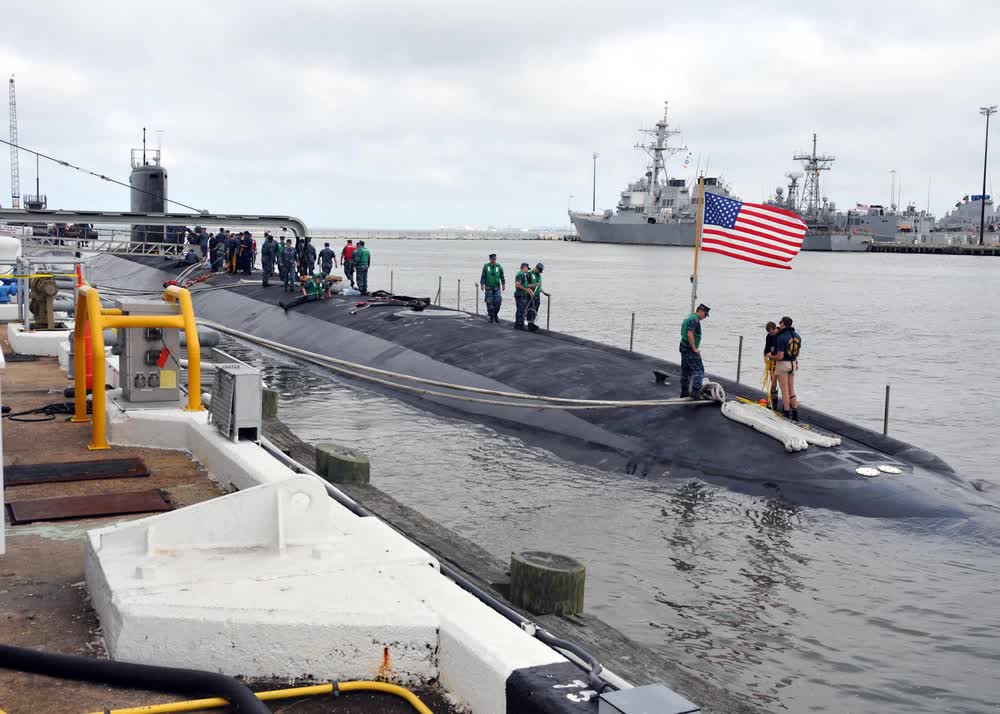Navy brings in consulting company to improve its submarine production – but it should be careful
- By Stavros Atlamazoglou
Share This Article

The U.S. Navy awarded a huge contract to one of the largest consulting companies in the world to help with submarine production.
Navy officials believe that submarines could determine a near-peer conflict with China in the Indo-Pacific and want to ensure that the fleet is ready for the challenge. So, the Navy awarded Deloitte Consulting LLP a five-year contract worth $2.437 billion to help it make its submarine production process more efficient and modern.
“This requirement is to establish an Enterprise Integration Partner to deliver systemic, holistic solutions to regional and broader submarine industrial workforce and industrial base challenges,” the Pentagon said.
The Navy is looking to produce up to three submarines every year so that it can modernize its fleet while also maintaining credible conventional and nuclear deterrence.
Consulting companies have some highly educated problem-solvers in their ranks. However, the U.S. military and Intelligence Community don’t have the best experience with these firms. For example, a few years ago, the Central Intelligence Agency (CIA), National Security Agency (NSA), and the Office of the Director of National Intelligence (ODNI) brought in McKinsey and Co., one of the most prestigious consulting firms in the world, to help them restructure America’s spying apparatus.
However, the results were quite different from what the agencies were expecting. Several intelligence officials came out after McKinsey was done and said that the program produced a less effective and motivated spy force. The overall cost to the American taxpayer was estimated to have been around $10 million.
It is good that the Navy is trying to find ways to make its submarine production process more effective, but it should also be aware that external solutions aren’t always the answer.
Related: How do America’s nuclear submarines get resupplied at sea?
The US submarine fleet

The Navy has the largest and most capable submarine fleet in the world with over 70 vessels of three different categories. Specifically, the Navy operates attack submarines, fleet ballistic missile submarines, and guided missile submarines.
In terms of attack submarines, the Navy operates three classes: the Virginia (22 ships), Seawolf (three ships), and Los Angeles (24 ships). The Virginia class is the newest and most advanced in the world and is gradually replacing the aging Los Angeles subs.
The main mission set of attack submarines is to track down and take out enemy warships, merchant ships, and submarines using a combination of MK48 heavy torpedoes and Tomahawk cruise missiles. These warships can also project power on the ground with their arsenal of Tomahawks, as well as support special operations forces.
When it comes to fleet ballistic missile submarines, the Navy operates 14 Ohio class vessels and is working on the development of the Columbia class.
Fleet ballistic submarines provide a maritime nuclear deterrent. Each fleet ballistic missile sub carries 20 Trident II D5 ballistic missiles with nuclear warheads that can obliterate any target if necessary. Often called “Boomers,” fleet ballistic missile subs are designed specifically for nuclear warfare and ensure that even if America is attacked first, it could respond. There are always several Ohio class subs stealthily navigating the waters of the world ready to deploy their catastrophic payloads in the event of a nuclear war.
Finally, the Navy operates four Ohio class guided missile submarines. These share a similar superstructure with the Ohio class fleet ballistic missile subs but have been converted for stand-off strike missions. Each guided missile sub can carry an impressive 154 Tomahawk cruise missiles, while also hosting almost 70 special operators.
Read more from Sandboxx News
- Being an eyewitness more than once: My experiences with police
- Attempting to keep the historic BAR rifle relevant by turning it into a bullpup
- America’s NGAD fighter isn’t dead, but it is changing
- Video: Is it possible that the US operates secret aircraft?
- Ukrainian F-16 jets will have the same problem its Abrams tanks had says Zelenskyy
Related Posts
Sandboxx News Merch
-

‘Kinetic Diplomacy’ Bumper Sticker (Black)
$8.00 Add to cart -

A-10 ‘Warthog’ Poster
$22.00 – $28.00 Select options This product has multiple variants. The options may be chosen on the product page -

F-35 ‘Evolution’ Framed Poster
$45.00 – $111.00 Select options This product has multiple variants. The options may be chosen on the product page
Stavros Atlamazoglou
Greek Army veteran (National service with 575th Marines Battalion and Army HQ). Johns Hopkins University. You will usually find him on the top of a mountain admiring the view and wondering how he got there.
Related to: Military Affairs

SDV: The secret weapon of the Navy SEAL Teams

What damage can Ukraine inflict on Russia using its long-range Western weapons?
Sandboxx News
-

‘Sandboxx News’ Trucker Cap
$27.00 Select options This product has multiple variants. The options may be chosen on the product page -

‘AirPower’ Classic Hoodie
$46.00 – $48.00 Select options This product has multiple variants. The options may be chosen on the product page -

‘AirPower’ Golf Rope Hat
$31.00 Select options This product has multiple variants. The options may be chosen on the product page -

‘Sandboxx News’ Dad Hat
$27.00 Select options This product has multiple variants. The options may be chosen on the product page
